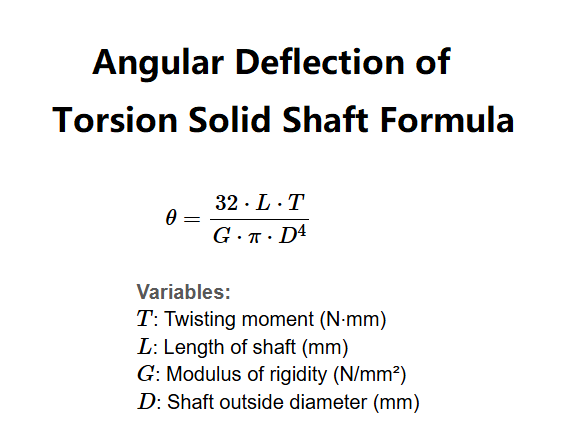 Home
Home
 Back
Back

Definition: Angular deflection (θ) is the angle of twist experienced by a solid shaft when subjected to a twisting moment (T).
Purpose: It is used in mechanical engineering to determine the torsional stiffness and deformation of shafts under load.
The angular deflection is calculated using the formula:
Variables:
Details: This calculation is essential for designing shafts in machinery, ensuring they can withstand torsional forces without excessive deformation.
Tips: Enter the twisting moment, length of the shaft, modulus of rigidity, and shaft diameter. Click "Calculate" to get the angular deflection in radians and degrees.
Q1: What is the significance of the modulus of rigidity (G)?
A: The modulus of rigidity (G) measures a material's resistance to shear stress. It is crucial for determining how much a shaft will twist under a given load.
Q2: Can I use this calculator for hollow shafts?
A: No, this calculator is designed specifically for solid shafts. For hollow shafts, a different formula is required.
Q3: Why is the result displayed in both radians and degrees?
A: Radians are the standard unit for angular measurements in physics and engineering, but degrees are more intuitive for many users. Displaying both ensures clarity.
Q4: What happens if I input zero for any value?
A: The calculator requires all inputs to be positive numbers. If any value is zero or negative, the calculation will not proceed.
Q5: How accurate is this calculator?
A: The calculator provides accurate results based on the formula and input values. However, real-world conditions may introduce additional factors not accounted for here.